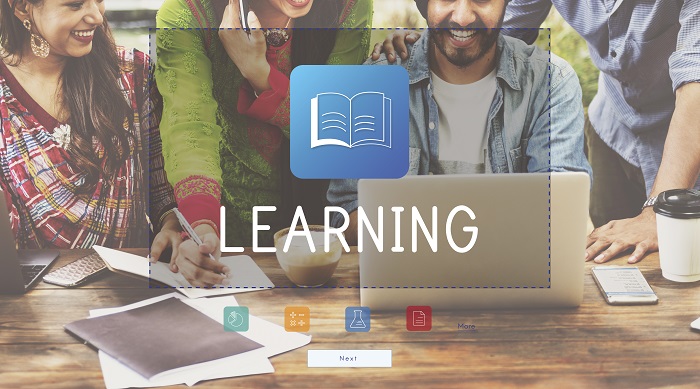In recent years, due to the digital transformation, education has evolved beyond the confines of traditional classrooms. Online learning has become an essential part of the modern education industry, empowering educators to reach a wider audience and learners to access all valuable resources from the comfort of their homes. One of the key technologies that made this transition possible is open source Learning Management Systems (LMS). In this post, we will explore how organizations and institutions can leverage these e-learning platforms to create highly effective and engaging online learning and teaching materials.
Embracing the Power of Open Source
In the realm of modern LMS, open source plays a crucial role. Software solutions with open-source code go beyond just technology; they promote collaboration, innovation, and accessibility. Such worldwide-known Learning Management Systems such as Moodle, Sakai, Canvas, and Opigno use open-source technology to empower educators to fully harness the collective knowledge of the community, unparalleled customization capabilities, and continuous innovation to enhance their learning materials. The whole open source movement and philosophy perfectly aligns with the evolving nature of education in this digital age and enables both teachers and students to actively participate in the learning process.

Benefits of Open Source LMS for Creating Learning Materials
- Cost-Effectiveness: Open source Learning Management System is a perfect choice for organizations and institutions looking to offer online courses without breaking the bank. Unlike proprietary e-learning software that usually comes with significant licensing fees and additional charges, LMS with open-source code is free to use. This cost-effectiveness levels the playing field and allows educational institutions with limited budgets or non-profit organizations to create learning platforms without huge budgets and direct funds towards other important tasks.
- Flexibility and Customization: The personalized learning approach is becoming more popular by the day. Open source LMS platforms provide educators with an unmatched level of flexibility and a vast array of customization options. Teachers can tailor learning environments to align with their pedagogical philosophy and students’ needs by designing unique course layouts, selecting themes, or adding custom features.
- Community Support and Collaboration: One of the most significant advantages of any open-source technology is the vibrant community that surrounds it. LMS will benefit from numerous educators, developers, and users sharing insights, troubleshooting issues, and collectively improving the platform. This robust communal support ensures that educators are not alone in their journey of online teaching. Open source community can provide countless helpful tips and ideas, from basic technical glitches to the newest teaching methodologies.
- Data Privacy and Control: Today, educational institutions must prioritize safeguarding sensitive students’ data due to rising concerns about data security and cyber attacks. With open-source LMS, organizations can choose to self-host the platform on their own server or use a trusted provider. This level of control over data ensures that sensitive information is being handled responsibly.
- Scalability: As the demand for online courses increases, scalability becomes an essential consideration. Open-source LMS solutions are designed to accommodate different needs, from small courses to comprehensive e-learning platforms. With the ability to scale resources and adapt a system to evolving requirements, educators can quickly expand their course offerings without facing technical setbacks.
- Extensibility: To meet the ever-changing demands of modern online education, teachers can use a vast repository of plugins, themes, and extensions developed by members of the community. This extensibility enables seamless integration of multimedia elements, gamification features, interactive simulations, and analytical tools. It enriches the learning experience and makes it more engaging for students.

Creating Engaging Learning Materials
- Content Creation: Whether it’s text-based lessons, video materials, quizzes, or assignments, the key to students’ engagement is to present information in a way that resonates with different learning styles. Open source LMS usually come with various content creation tools that empower teachers to create dynamic multimedia-rich lessons. Incorporation of real-life examples, visual elements, and interactive features can easily transform dry material into captivating lessons students can relate to.
- Course Structuring: A well-structured course is an essential part of a seamless learning experience. Open-source training platforms provide educators with a means to organize learning content into coherent modules or units. Clearly outlined learning objectives, the natural flow of the course, and easy access to necessary information through intuitive navigation lead to reduced user frustration and enhanced engagement.
- Interactivity: The critical ingredient in holding learners’ attention today is interactivity. Open-source platforms offer a wide range of tools to facilitate interaction, such as discussion forums, live chat features, or collaborative projects. These features encourage students to participate in the educational process more actively, ask questions, share insights, and engage in meaningful discussions with both peers and teachers.
- Multimedia Integration: In this digital age, creating engaging educational content without multimedia integration is almost impossible. Videos, audio clips, presentations, animations, and simulations add a layer of depth unachievable with text-based content. Open-source LMS allows educators to easily integrate multimedia elements, making the learning experience more visually stimulating and memorable.
- Gamification Elements: Gamification is one of the main trends in modern education. These features add an element of fun and competition to the learning experience. Open-source platforms often provide options for including gamification elements, such as badges, leaderboards, points, and progress tracking. With rewards, achievements, and rewards, educators can motivate learners to complete tasks, participate actively, and strive for excellence.
- Assessment and Feedback: Assessments are not only about evaluating students; knowledge; they also provide opportunities for constructive feedback and tailoring content. Open-source LMS offers an impressive variety of assessment options, like quizzes, assignments, and peer reviews. Educators have all the capabilities needed for creating assessments that challenge critical thinking, problem-solving, and application of concepts learned.
Conclusion
Open-source Learning Management Systems have revolutionized the way educators create, manage, and deliver online course materials. The flexibility, customization, extensibility, and community support provided by these platforms empower organizations and institutions to provide engaging and effective learning experiences to audiences more expansive than ever. By embracing the power of open-source e-learning solutions, educators can access infinite possibilities to create courses that inspire and empower learners from all over the world.





